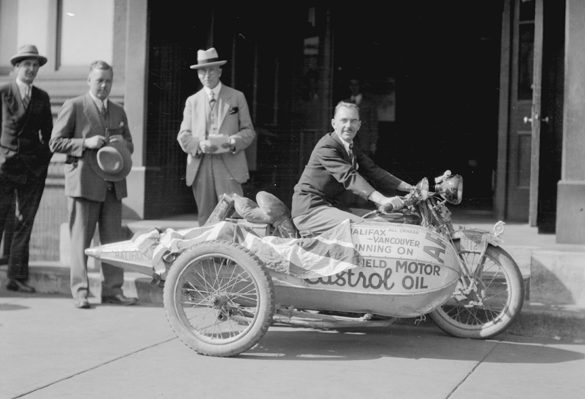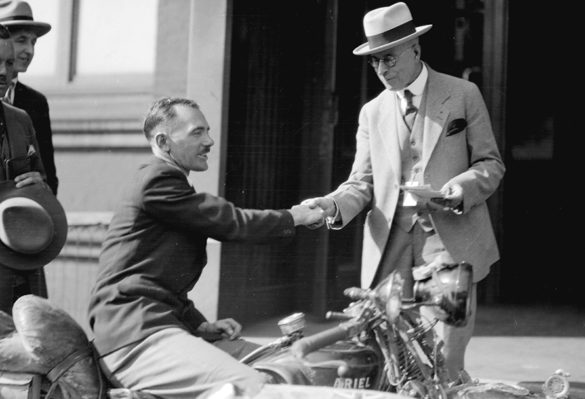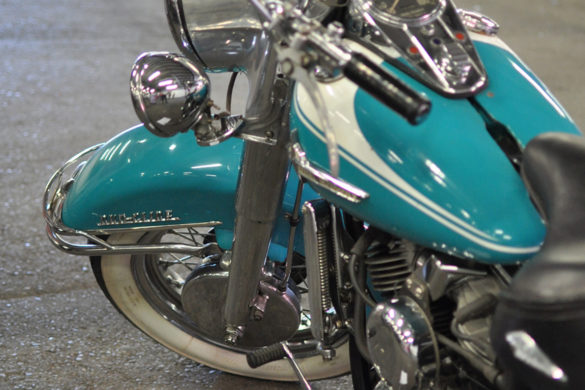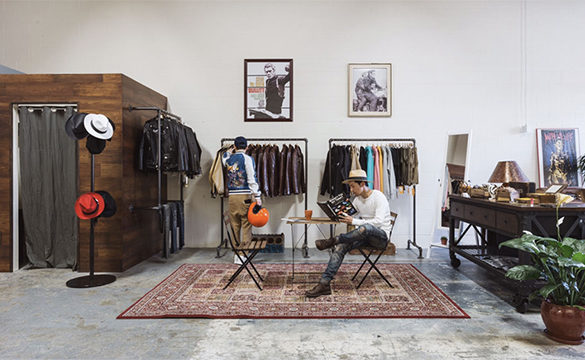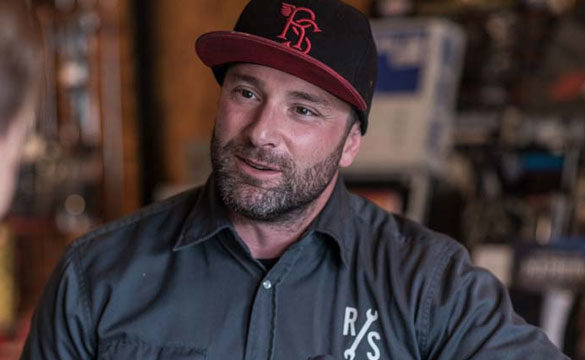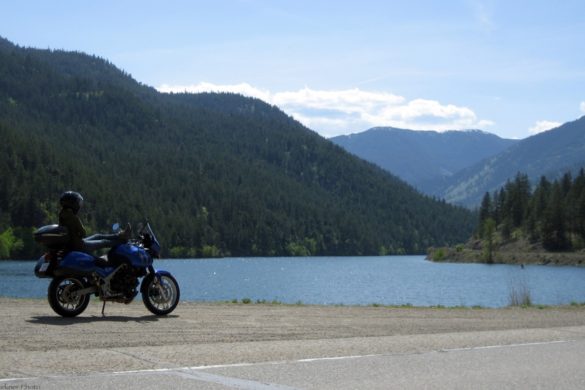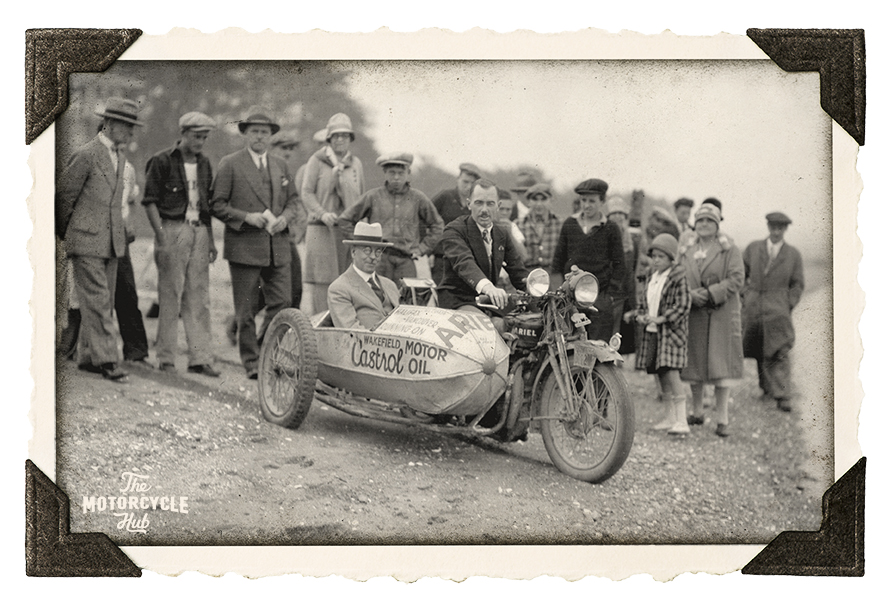
Graham Oates in English Bay, Vancouver, 1928. Photo by Stuart Thomson, courtesy of the City of Vancouver Archives.
One of Canada’s earliest trans-continental pioneers was J. Graham Oates who travelled from coast to coast on his 497cc Ariel motorcycle. In 1928 he became the first person to cross Canada on rubber tires.
Oates was born James Walter Graham Oates in 1897 on the Isle of Man. As a teenager he served in WWI as a dispatch rider, both on horse and motorcycle. He was also a motorcycle builder, tester and Isle of Man TT (Tourist Trophy) racer.
In 1927 Oates moved to Canada, during which time he conceived the idea for his epic journey. Wartime colleague Charles Dennis Brown, representative of the then-struggling oil brand “Castrol Oil”, agreed to sponsor the trip in order to bring positive relations to the company. At that time, the Trans-Canada Highway wasn’t yet complete, so Oates had to persuade the Canadian Railway Authorities to grant him permission to use their railway lines to cross the interior.
The Ariel motorcycle selected for the journey was the 1928 497cc twin-port model, shipped from the manufacturer in England to Canada where it was outfitted with a locally-made Sturgess sidecar from Hamilton, Ontario. Upon the arrival of his brand new bike which he named “Toby”, Oates remarked in his journal:
“Days blended into nights but sleep was a secondary consideration to me. Was I not working on my dear little Toby? At last all ready, tyres fitted with great care, kneegrips adjusted just so, handlebars placed to take the strain off my arms and the favourite Terry (saddle) adjusted to a degree for what of the hundreds of miles of spine shattering, body pounding ties of the Canadian railway. Gas, oil and now for the engine, a lusty kick and Toby starts for the first time on Canadian air. But I must take her gently for a few hundred miles in order to settle the bearing surfaces down to their work.”
On July 21st, 1928, Oates departed from Halifax, where he dipped the wheel of Toby in the Atlantic Ocean before venturing westward. During the journey across Canada he encountered many challenges, from poor weather to lodging in his sidecar:
“… and why did I ever think of this confounded across Canada trip? My neck feels as if the hangman had been putting in a little practice on me. My spine I swear will never be the same again and I am cold as well; never mind, I am. Those that have slept in a sidecar with the framework as a mattress probably will agree with me that it needs a big stretch of imagination to include it under the word comfort.”
“My face was giving me a great deal of pain, it having been blistered and peeled by the combined efforts of sun, wind, and rain. It ached and I almost felt like taking a rest instead of a contemplated all night ride.”
Oates regularly encountered mechanical issues, flat tires and difficulties with his sidecar that malfunctioned from the start. He travelled at a leisurely pace, and took many rest days along the way.
Although there were times during his more than 6,400km transcontinental journey that he contemplated the folly of his undertaking, Oates persevered. On September 21, 1928, he approached Vancouver where he was joined for the final leg of his journey by the mayor, Louis D. Taylor. The following day Oates dipped his tire into the Pacific Ocean at English Bay, successfully completing his coast-to-coast quest.
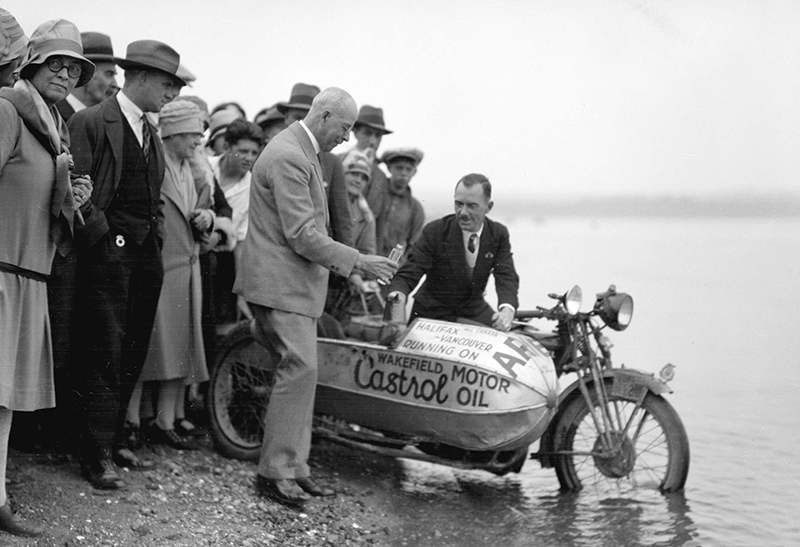
Graham Oates and Vancouver’s Mayor L. D. Taylor at English Bay on September 22, 1928. Mr. Taylor is holding a bottle containing Atlantic Ocean water that Oates transported from Halifax.
Photos source: The City of Vancouver Archives (Photographer Stuart Thomson, 1928)
Journal excerpts source: Snelling, Bill. Aurora to Ariel: The motorcycling life of J. Graham Oates, a pioneering Manx motorcyclist. Amulree Publications, 2013.

